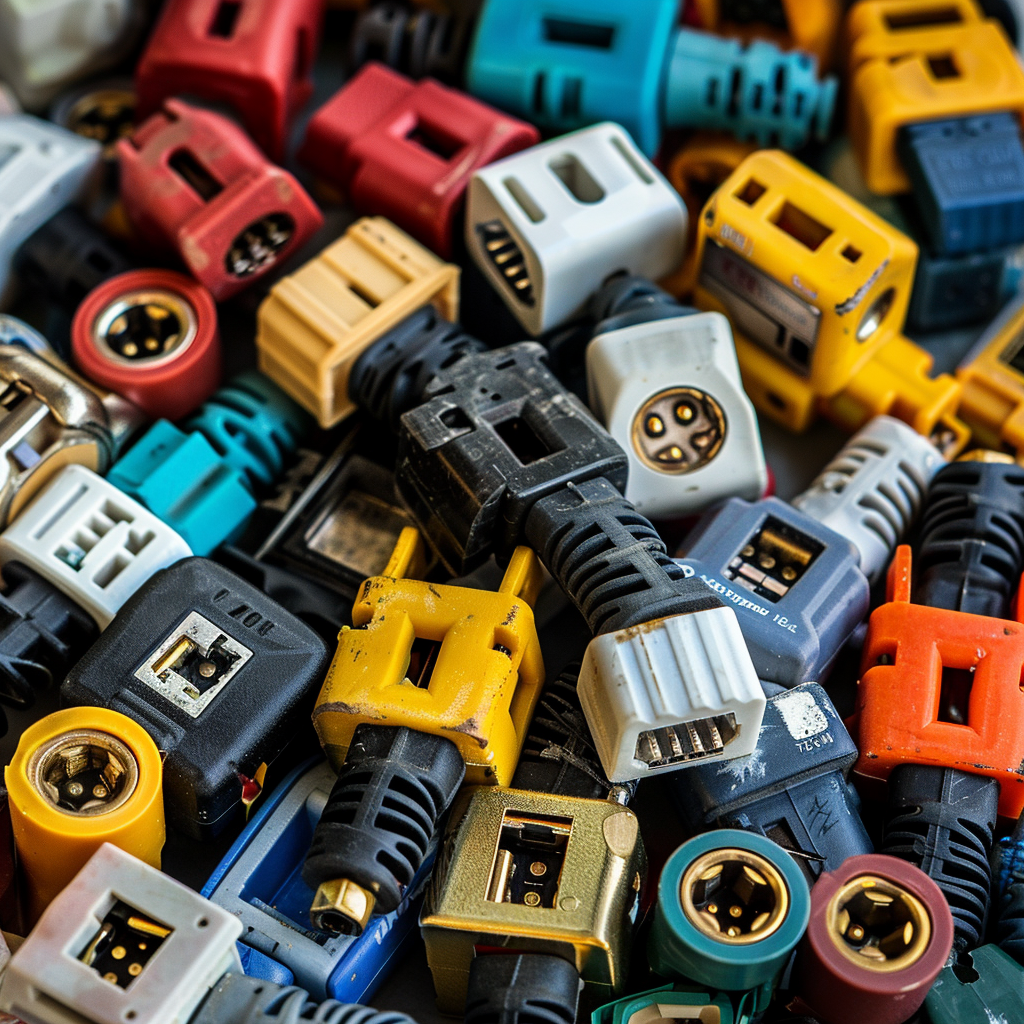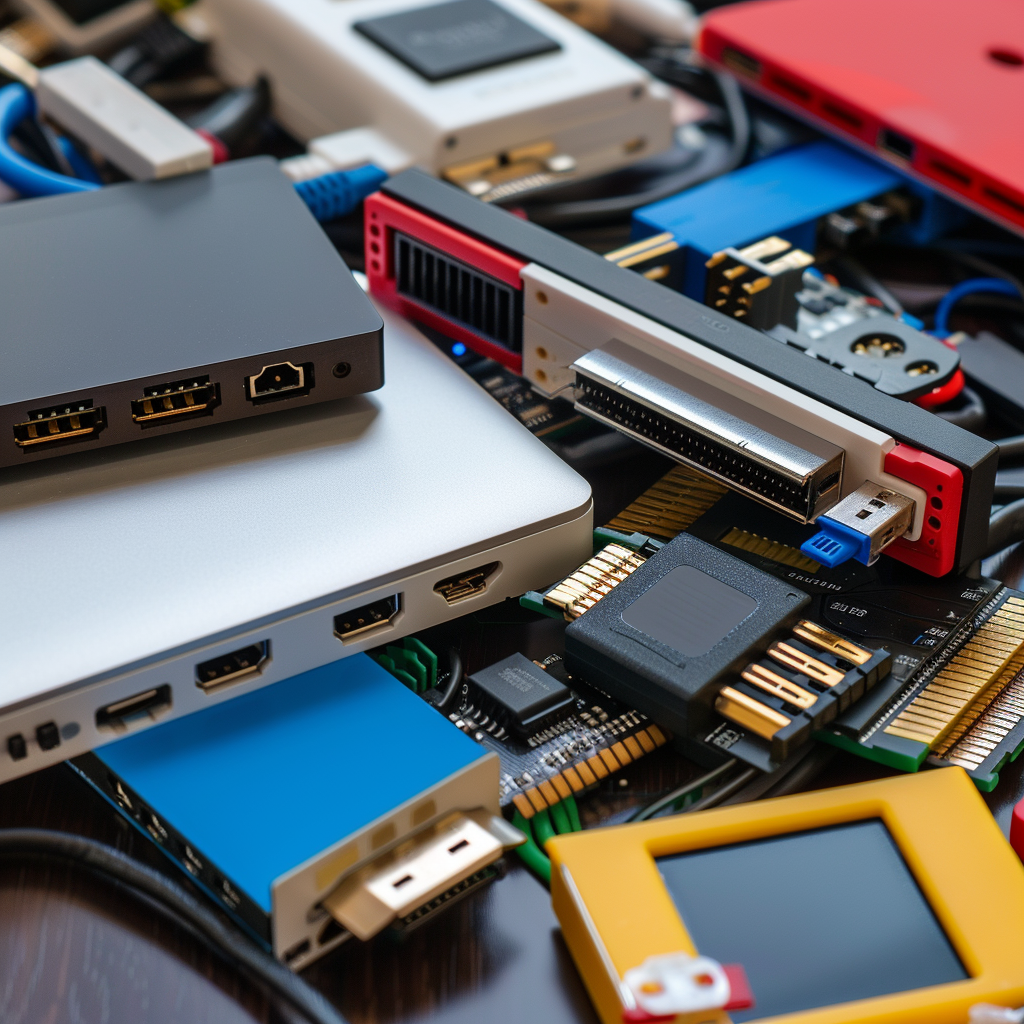Electrical adapters are essential components that facilitate the connection of devices with differing electrical specifications. Whether you’re traveling, setting up a home theater, or simply trying to connect various electronics, understanding the types of electrical adapters available can help you ensure compatibility and safety. In this guide, we’ll explore the different types of electrical adapters, their functions, and how to choose the right one for your needs.
What Are Electrical Adapters?
Electrical adapters are devices that convert electrical connections from one form to another, allowing devices with incompatible plugs or voltages to connect to power sources or other devices. They serve various purposes, from changing plug shapes to converting voltage levels.
Types of Electrical Adapters
1. Plug Adapters
Overview: Plug adapters, also known as travel adapters, allow you to connect devices with different plug shapes to a power outlet.
Use Cases:
- Traveling Abroad: When visiting countries with different plug types, a plug adapter enables you to use your electronic devices without hassle.
Key Features:
- Variety of Shapes: Available in numerous shapes to accommodate various international standards (e.g., Type A, B, C, D).
- No Voltage Conversion: Most plug adapters do not convert voltage; they simply allow the plug to fit into a different socket. Always check if your device can handle the local voltage.
2. Voltage Converters
Overview: Voltage converters change the voltage of electrical current to match the requirements of your devices.
Use Cases:
- Using Appliances Overseas: If you want to use a device rated for 110V in a 220V country, a voltage converter is necessary to prevent damage.
Key Features:
- Step-Up and Step-Down: Step-up converters increase voltage (from 110V to 220V), while step-down converters reduce voltage (from 220V to 110V).
- Wattage Rating: Choose a converter with a wattage rating that exceeds the power requirement of your device for safe operation.
3. Power Adapters
Overview: Power adapters convert AC power from an outlet to the appropriate DC power for electronic devices.
Use Cases:
- Charging Electronics: Commonly used for laptops, smartphones, and other portable devices that require specific voltage and current levels.
Key Features:
- Varied Output Specifications: Power adapters come with different voltage and amperage outputs. Ensure compatibility with your device.
- Interchangeable Tips: Some power adapters have interchangeable tips for various devices, making them versatile for different applications.
4. Audio/Video Adapters
Overview: These adapters facilitate the connection of audio and video devices with different formats or connection types.
Use Cases:
- Home Theater Systems: Connect devices like projectors, TVs, and sound systems using different input/output formats.
Key Features:
- Types: Common examples include HDMI to VGA adapters, RCA to 3.5mm adapters, and DisplayPort to HDMI adapters.
- Signal Integrity: High-quality adapters maintain signal integrity, ensuring optimal audio and video performance.
5. USB Adapters
Overview: USB adapters enable devices to connect through USB ports, often converting one USB type to another or providing additional functionality.
Use Cases:
- Connecting Peripherals: Use USB adapters to connect mice, keyboards, and storage devices to computers with different USB configurations.
Key Features:
- Types: Common types include USB-C to USB-A, USB to Ethernet, and USB OTG adapters.
- Data Transfer and Charging: Many USB adapters support data transfer and power delivery, enhancing functionality.
6. Network Adapters
Overview: Network adapters allow devices to connect to a network, either through wired or wireless connections.
Use Cases:
- Connecting to Wi-Fi: Use a Wi-Fi adapter to enable internet connectivity on devices without built-in wireless capabilities.
Key Features:
- Types: Common examples include Ethernet adapters, Wi-Fi dongles, and Bluetooth adapters.
- Data Speeds: Different adapters offer varying data transfer speeds, so choose one that meets your internet requirements.
Comparison of Adapter Types
Here’s a comparison table summarizing key features and common use cases for various adapter types:
| Adapter Type | Functionality | Common Use Cases |
|---|---|---|
| Plug Adapter | Connects different plug shapes | Traveling internationally |
| Voltage Converter | Changes voltage levels | Using devices in different regions |
| Power Adapter | Converts AC to DC | Charging laptops and gadgets |
| Audio/Video Adapter | Connects different audio/video devices | Home theater systems |
| USB Adapter | Connects devices via USB | Peripherals and data transfer |
| Network Adapter | Connects devices to networks | Wi-Fi connections |
Practical Scenarios
Traveling Abroad
Imagine you’re heading to Europe with your laptop, smartphone, and camera. You’ll need a plug adapter for your devices, a voltage converter if your charger isn’t dual voltage, and potentially a USB adapter to connect peripherals. This ensures all your electronics function seamlessly during your trip.
Setting Up a Home Theater
In a home theater setup, you may need various audio/video adapters to connect your devices. For example, an HDMI to VGA adapter can connect a laptop to a projector, while RCA adapters can link older audio equipment to modern systems. Ensuring you have the right adapters will enhance your viewing and listening experience.
Tips for Safe Usage
- Check Compatibility: Always ensure that the adapter is compatible with both the device and the power source, particularly regarding voltage and wattage specifications.
- Avoid Overloading: Be cautious not to exceed the maximum load of the adapter to prevent overheating and damage.
- Inspect Regularly: Check for signs of wear or damage on adapters, cables, and connectors. Replace any damaged items to ensure safe operation.
Common Issues and Troubleshooting
- No Connection: If devices aren’t communicating, check that all connections are secure and that the correct adapter is being used.
- Poor Quality or Distorted Signal: If you experience issues with audio or video quality, try using shorter cables or repositioning devices to minimize interference.
- Incompatibility: If the adapter doesn’t seem to work, double-check compatibility with your devices, and ensure you’re using the correct port types and standards.
Future Trends in Adapter Technology
As technology continues to evolve, we can expect advancements in adapter technology, including:
- Increased Wireless Solutions: The rise of wireless technology may lead to more wireless adapters, reducing the need for physical connections.
- Smart Adapters: Future adapters may include smart features, such as built-in power management, data transfer optimization, and even app integration for easier control and monitoring.
- Higher Data Transfer Rates: With the development of standards like USB4 and Thunderbolt 4, expect adapters to support faster data transfer rates and improved compatibility across devices.
Environmental Considerations
When selecting electrical adapters, consider the environmental impact. Choose energy-efficient options and be mindful of e-waste. Recycling old adapters can contribute to sustainability efforts.
Conclusion
Understanding the different types of electrical adapters and their functions is essential for ensuring compatibility and safety in your electronic setups. By choosing the right adapter for your needs, you can simplify your connections, enhance your devices’ performance, and avoid potential hazards. Always prioritize quality and compatibility when selecting adapters, and you’ll enjoy a seamless experience with your technology. If you have any questions or want to share your experiences with electrical adapters, feel free to leave a comment below!
Related Articles:



